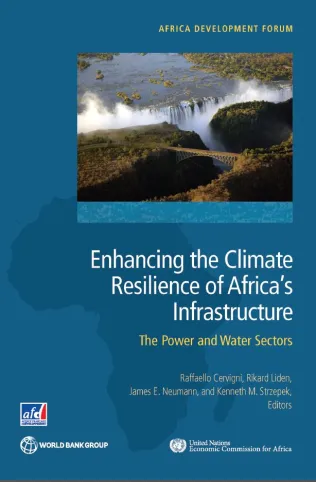Share the page
Enhancing the Climate Resilience of Africa's Infrastructure : The Power and Water Sectors
Published on

This book evaluates -using for the first time a single consistent methodology and the state-of-the-arte climate scenarios-, the impacts of climate change on hydro-power and irrigation expansion plans in Africa’s main rivers basins (Niger, Senegal, Volta, Congo, Nile, Zambezi, Orange); and outlines an approach to reduce climate risks through suitable adjustments to the planning and design process. The book finds that failure to integrate climate change in the planning and design of power and water infrastructure could entail, in scenarios of drying climate conditions, losses of hydropower revenues between 5% and 60% (depending on the basin); and increases in consumer expenditure for energy up to 3 times the corresponding baseline values. In in wet climate scenarios, business-as-usual infrastructure development could lead to foregone revenues in the range of 15% to 130% of the baseline, to the extent that the larger volume of precipitation is not used to expand the production of hydropower. Despite the large uncertainty on whether drier or wetter conditions will prevail in the future in Africa, the book finds that by modifying existing investment plans to explicitly handle the risk of large climate swings, can cut in half or more the cost that would accrue by building infrastructure on the basis of the climate of the past.
Useful Information
-
Authors
-
Raffaello CERVIGNI, Rikard LIDEN, James E. NEUMANN, Kenneth M. STRZEPEK
-
Number of pages
-
217
-
Collection
-
Africa Development Forum
